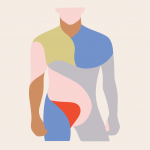What You Should Know
- All three CAR T-Cell Therapies that have FDA approval for a relapse of diffuse large B-cell lymphoma—axi-cel, liso-cel, and tisa-cel—share a common goal: reprogramming your own immune system to destroy lymphoma cells that have resisted standard treatments.
- Choosing among them comes down to individual factors — including how quickly you need treatment, your overall health, and organ function, how your disease is progressing, and your cancer center’s experience with each product.
“We have three CD19-directed CAR T-Cell Therapies that are currently approved for patients with recurrent large cell lymphoma,” explains Dr. Jonathon Cohen, a professor of hematology and medical oncology at Emory University School of Medicine and the Winship Cancer Institute. “Two of them are approved in the second line, and those two are Axi-Cel and Liso-Cel. There is one other product called Tisa-Cel, which is approved in the third line and beyond for patients with recurrent lymphoma. All three of these can be very effective, and it’s important to just talk with your doctor about which is most appropriate for you.”
Read MoreThree Distinct Products, One Goal
Each therapy starts with the same principle: collecting your own immune cells, engineering them to recognize CD-19, a marker found on the surface of B-cell lymphomas, and infusing them back into your body to target and destroy the cancer. However, each of the approved products, axi-cel (Yescarta), liso-cel (Breyanzi), and tisa-cel (Kymriah), was developed separately, tested in different studies, and approved for slightly different points in the treatment.- Axi-cel (Yescarta) was the first CAR T-cell therapy to change the standard of care for large B-cell lymphoma. In the landmark ZUMA-7 trial, axi-cel was compared with the traditional route of salvage chemotherapy followed by stem cell transplant. The results were practice-changing: patients receiving axi-cel had a significantly longer event-free survival and, with extended follow-up, a clear overall survival benefit. These findings led to axi-cel’s second-line approval, meaning it can be used after the first relapse, not just as a last resort.
- Liso-cel (Breyanzi) is the CAR T-Cell Therapy studied in a groundbreaking clinical trial called TRANSFORM, which showed that giving CAR T-Cell Therapy earlier—not just as a last resort—could lead to much better results for certain lymphoma patients. Liso-cel, which is now approved as a second-line treatment because of that study, is made using a process designed to keep the therapy powerful while reducing the chance of severe side effects. Many doctors feel it can cause fewer inflammatory reactions, like CRS or neurological symptoms, compared with some other CAR T-Cell Therapy options. Still, as Dr. Cohen points out, these reactions can happen with any CAR T-Cell Therapy.
- Tisa-cel (Kymriah), the earliest CAR T-Cell Therapy approved for lymphoma, remains an option for patients in the third-line and beyond setting, those whose disease has relapsed after at least two prior treatments. While tisa-cel did not outperform standard therapy in its own second-line trial (BELINDA), it remains an important therapy for patients further along in their treatment course and for institutions that have deep experience using it safely.
Efficacy: More Similar Than Different
Despite being distinct products, the response rates and remission durability across the three therapies are relatively consistent. In their respective pivotal studies, roughly half of patients achieved a complete remission, and one-third or more remained progression-free years later.“The data show that there’s not a real difference in activity,” Dr. Cohen emphasizes. “All three can result in complete remission.”
That means the conversation isn’t about which product is “best,” but which one is best for you, based on your medical history, timing, and treatment center’s experience.
Why Your Treatment Center Matters
Although each CAR T-Cell Therapy product targets the same antigen, the manufacturing process, cell composition, and timing vary slightly. Some products are produced faster; others have shorter infusion times or different supportive medication needs. These nuances matter most in the hands of the team delivering the therapy.
“If a given site primarily uses one product,” Dr. Cohen notes, “it makes sense for you to receive that product, because they know exactly what to look for and how to deal with it.”
Every CAR T-Cell Therapy center has its own protocols for monitoring, managing side effects, and coordinating care between the hospital and home. A team that regularly administers a particular product can often recognize and respond to side effects sooner, which is especially important for preventing or minimizing side effects.
Toxicity and Safety: Is there a Difference?
All three CAR T-Cell therapies approved for diffuse large B-cell lymphoma can cause cytokine release syndrome, an inflammatory response that can trigger fever, fatigue, and in some cases, low blood pressure or breathing difficulty. They can also cause neurologic effects such as confusion or tremors, collectively known as immune effector cell-associated neurotoxicity syndrome (ICANS).
Liso-cel is sometimes described as “gentler,” but it’s important to understand that no CAR T-Cell Therapy is risk-free. What really drives safety is close monitoring and prompt management, not the product itself. This is the reason why specialized centers are equipped with standardized algorithms and 24/7 teams ready to respond within minutes to any early sign of trouble. Most patients recover fully from these effects, often within days.
Making The Choice
Sometimes, the decision isn’t about toxicity or data, it’s about time. The lymphoma might be advancing quickly, and the best therapy is the one that can be delivered soonest.
Manufacturing times vary slightly between products and between centers. For an aggressive relapse, waiting even an extra week or two can make a difference. “Sometimes it comes down to which one they can get quicker,” Dr. Cohen adds. “Sometimes it depends on how the disease is behaving. There are a number of factors that may come into play.”
Learn more about SurvivorNet's rigorous medical review process.








